
MENUMENU
TALK TO AN EXPERT
Special Hours: 7AM – 6PM PST
TALK TO AN EXPERT
Special Hours: 7AM – 6PM PST
Every RVer knows that quality engine and house batteries are key to a successful travel experience. But not everyone understands the pros and cons of different battery types. Is there much of a difference between the two main types of batteries, lead-acid vs. lithium-ion?
Will it matter which type of battery you choose to fulfill your power needs as an RVer? (Hint: You bet it will!)
What’s the big deal? Well, once you understand the differences between lead-acid vs. lithium-ion batteries, you’ll be well-armed to choose a battery or a bank of batteries that will power your needs for years to come. That’s a huge deal, so let’s dive right in:
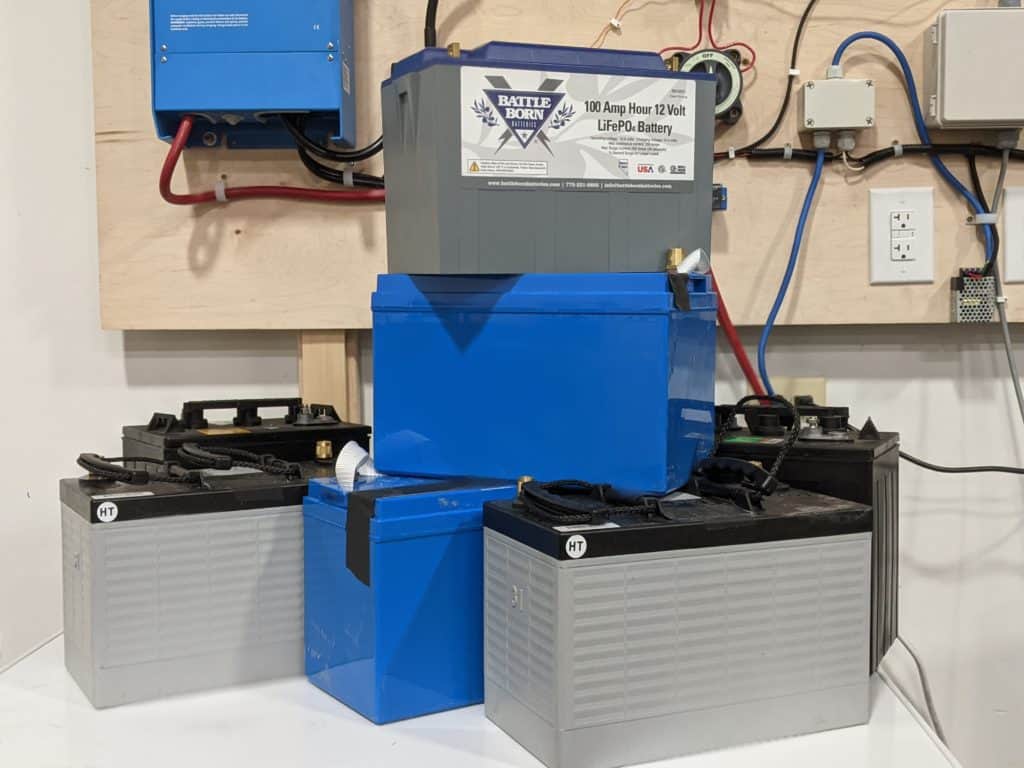
Lead-acid batteries have been around since the mid-1800s and are the earliest type of rechargeable battery in existence! Over 170 years old, the technology behind lead-acid batteries is mature and successful. But it also means that it does not take advantage of the most advanced technology available. Let’s see how that might impact RV’ers in particular.
Lead-acid batteries use a chemical reaction to generate electricity. Each 12-volt battery contains six (6) cells. And each cell contains a mixture of sulfuric acid and water (in varying degrees). Each cell has a positive terminal and a negative terminal. When the battery is generating power, it is discharging as it does so. The chemical reaction causes the sulfuric acid to break down into the water stored inside each cell to dilute the acid. So the use of power depletes the acid.
When the battery is charging back up, the process reverses, and the battery’s recharging builds the acid molecules back up. That process is the storing of energy. (Remember – a battery doesn’t store electricity. It stores the chemical energy required to produce the electricity.)
Each of the six cells in a 12-volt lead-acid battery has a voltage of about 2.1 volts when fully charged. Those six cells together then give a fully charged battery offering around 12.6 volts. (We use terms like “about” and “around” because exact voltage depends on various factors particular to the battery and the usage and care of that battery.)
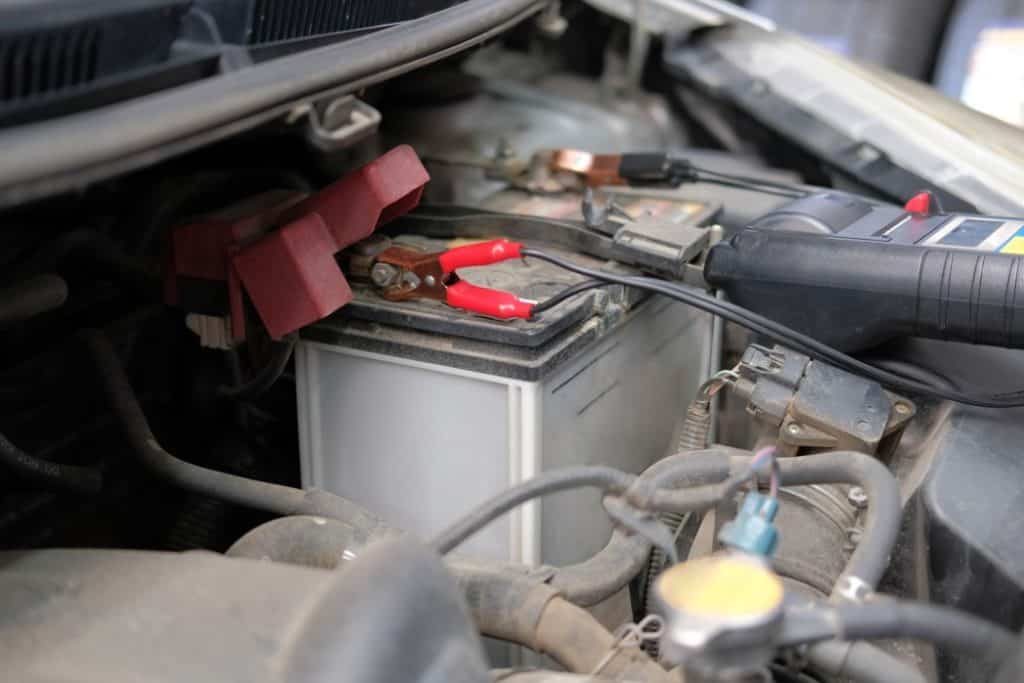
Now that we know how a typical lead-acid battery works, let’s look at the various types of lead-acid batteries available and how they differ.
A flooded lead-acid battery is a battery commonly used as an engine battery to start a vehicle. This type of battery can also be used as a golf cart or motorcycle battery, or even a deep cycle battery in a solar system.
With a flooded lead-acid battery, the owner can access the six (6) individual cells mentioned earlier and can (and should!) add distilled water to the cells to keep them from drying out. These batteries are heavy and have some serious maintenance involved.
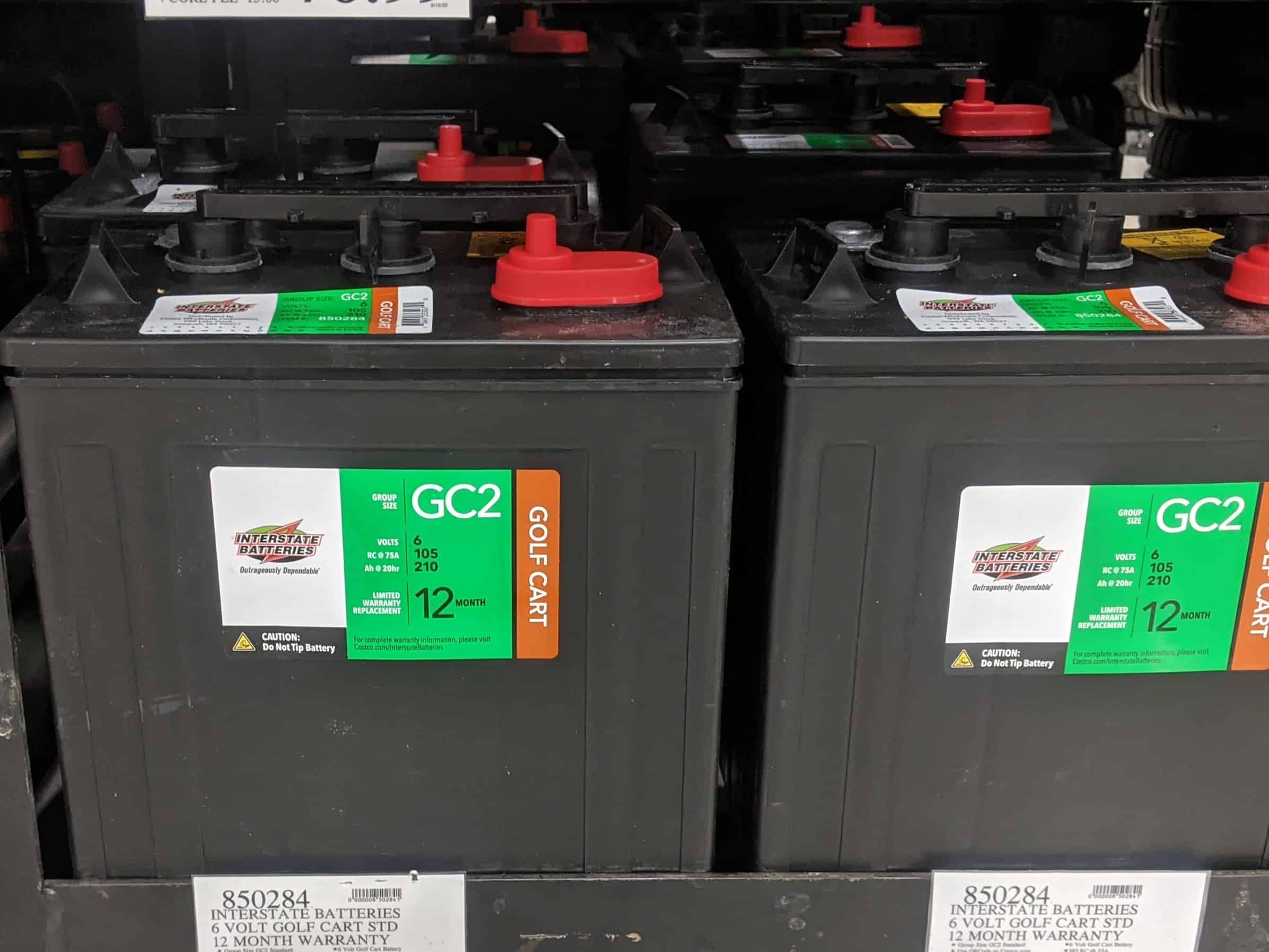
A sealed lead-acid battery is essentially the same in terms of the internal functioning of the battery itself. However, the word “sealed” means that we don’t have access to the six cells as we would in the flooded lead-acid battery. It is common to see these batteries used as engine starting batteries or in deep cycle applications.
Unlike the flooded lead-acid, manufacturers construct the sealed lead-acid batteries with enough acid to take the battery through the period of its warranty predictably. One would not add distilled water to a sealed lead acid battery, so there is no real maintenance involved. These batteries also do not give off gasses and can be installed in enclosed spaces.
AGM stands for “Absorbed Glass Mat,” which means that the electrolytes in these batteries are suspended close to the lead plates. This method supposedly increases the discharge and recharge rates’ efficiency. It is not uncommon to see AGM batteries used in RV or marine applications or engine batteries. While it’s different from flooded and sealed batteries, an AGM battery is still a wet cell battery.
Like the AGM battery, a Gel cell battery has the suspended electrolyte, but the gel cell contains silica. The silica allows it to stiffen, so it is not a wet cell battery like the AGM battery.
Gel cell batteries are perhaps the most sensitive in terms of damage from overcharging. These batteries require special chargers and commonly appear in deep-cycle applications such as wheelchairs, trolling motors, and RVs. Gel cell batteries are not as common as other types of lead-acid batteries we’ve discussed.
Lead-acid batteries are popular for a variety of reasons. First of all, they offer mature technology that has been around for over a century and a half. This often gives people a sense of security as a widely understood technology.
Lead-acid batteries are relatively inexpensive to produce (though terrible for the environment), making them relatively cheap to buy upfront. On the face of cost considerations, they initially appear to be the better deal for consumers. However, this does not consider the battery’s overall lifespan or the actual amount of energy you get out of them. Keep reading to discover how lead-acids measure up to lithium on these counts.
Lead-acid batteries are capable of deep discharge, although deep discharges will markedly impact the battery’s life.
Lead-acid batteries have been the most successful power storage source for many years. However, they have some major disadvantages compared to modern lithium batteries.
Lead-acid batteries are very heavy. Weight can be a severe drawback for mobile applications. They also do not store significant amounts of power for their size. Their weight means that to hold enough power for a household’s use would take up a lot of space. How much they store per weight and space is called their energy density, which is relatively low as far as batteries go.
Lead-acid batteries can take a long time to charge. The long charge times are because of their internal design. It causes the charge to slow down once they get closer to completion. The absorption charge cycle causes this slowing.
If the battery does not get through its absorption charge before discharging, it can cause sulfation in the battery. Sulfation impacts the charging time, charging efficiency, and increases battery temperatures.
When you discharge a lead-acid battery for too long, it also loses some of its ability to accept a charge, reducing its capacity. This damage is because the lead sulfate crystallizes and will no longer dissolve.
When discharging at a high rate for large appliances, lead-acid batteries suffer from the Peukert effect. The Peukert effect is a phenomenon that causes the battery to produce less energy before the voltage drops when discharging at high loads than discharging at lower loads. This means that you do not get all the energy from the battery you put in. Heat and chemical losses waste the energy.
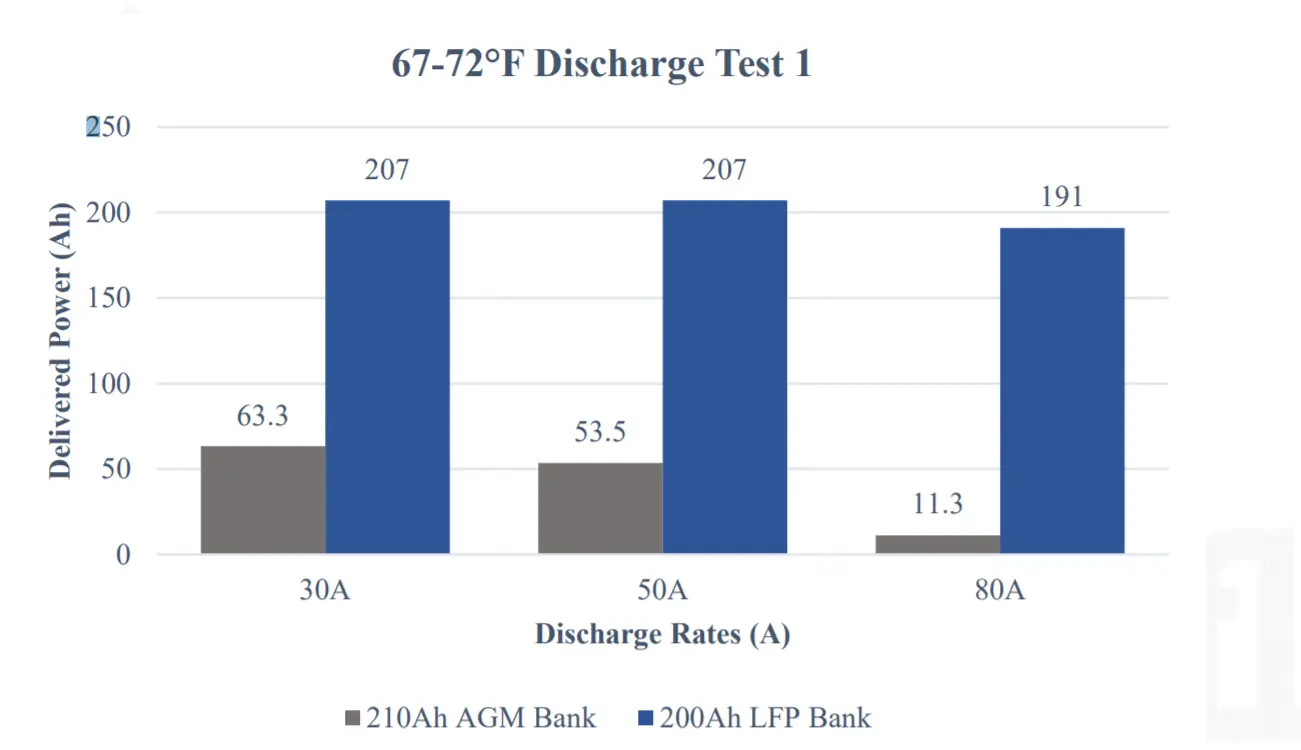
Overcharging can also cause “gassing.” The battery will release hydrogen, oxygen, and hydrogen sulfide. This is a highly flammable combination and can lead to explosions in some cases as well. If you ever smell rotten eggs coming from a lead-acid battery, vent the area and disconnect it immediately.
Overall, lead-acid batteries can be a cost-effective electrical storage solution. But, they need very specific charging and discharging parameters to keep them healthy and safe.
If any of the charge parameters above get out of whack, a lead-acid battery will experience a shorter life. Even if all parameters are kept perfect, the battery’s chemical processes break down with use and degrade the battery’s capacity over time.
Lead-acid batteries are among the most recycled items in the world. This is great and critical because their lead content has contributed to significant environmental and health concerns over the years. However, 5% of lead-acid batteries are not recycled. As a result, many millions of metric tons of lead are dumped into the environment.
Lead mines are also some of the most toxic and have caused larger areas of poisonous groundwater. Long-term exposure to lead, even in minuscule amounts, can cause brain and kidney damage and learning problems in children, a concern for all of us sharing this planet.
🌱 Find out more about why lead acid batteries are not sustainable, and alternatives are needed.

Lithium-ion batteries have become increasingly popular in recent years, and with good reason. Let’s have a look at some of the reasons why these relative newcomers have gained so much attention!
The chemical process within lithium-ion batteries during charging and discharging finds lithium ions moving between the positive and negative electrodes. When the battery is discharging, lithium ions move toward the positive electrode, losing or gaining an electron in the resulting chemical reactions. These chemical reactions create a flow of electrons that produces an electric current. The reverse occurs during the charging process.
Mobile electronics like phones, electric scooters and bikes, hoverboards, and wheelchairs all commonly use lithium batteries. But in recent years, the use of lithium-ion batteries has expanded, and they’ve found a home in RVs, boats, and many types of solar applications.
Like lead-acid batteries, there are many different types of lithium-ion batteries. There are many more types of lithium-ion batteries as their chemistries can vary drastically. Even though there are so many types, most lithium-ion battery chemistries have similar benefits compared to lead-acid.
For the sake of this article, we will be referring primarily to LiFePo4 batteries, or what’s known as lithium iron phosphate batteries. “Lithium iron” is the most common chemistry used for energy storage applications in RVs, boats, and homes. People use these batteries because they offer superior performance to lead-acid while being a very safe chemistry.
When comparing lead-acid vs. lithium-ion batteries, we overcome almost all the cons of lead-acid. Looking at RV use, in particular, lithium-ion batteries will run multiple devices and appliances simultaneously. The RV’s inverter power capacity is the only limitation.
But if you have sufficient inverter capacity, you’ll find yourself able to run a refrigerator, lights, fan, and television, computers, and even air conditioners.
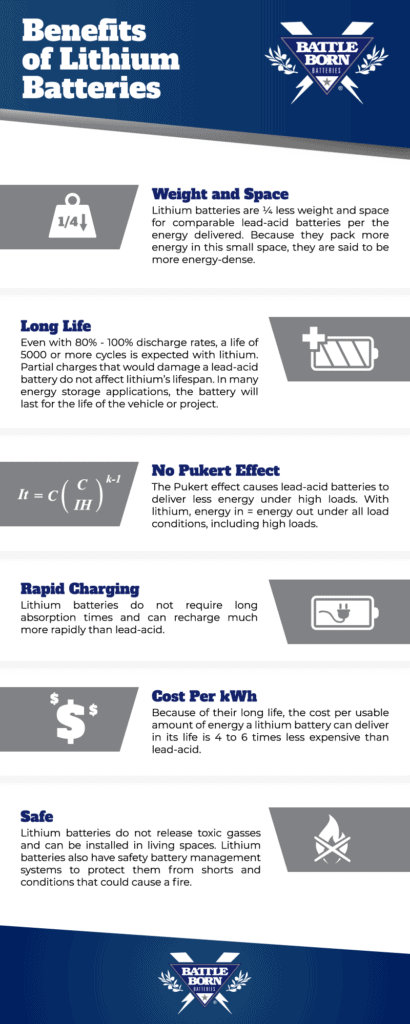
⚡️ Upgrading to lithium opens the door to higher-power setups like split phase inverters for 240V appliances.
Energy density means how much energy a battery stores per the space and weight of a battery. Lithium batteries have a much higher energy density than lead-acid.
The higher energy density is a huge benefit for mobile use cases because space and weight are limited. For the same amount of energy in lead-acid, lithium batteries weigh less than one-quarter the weight!
Fewer batteries are also needed, so more space can be used for storage. Lithium-ion batteries store much more energy in the same amount of space and still keep the weight down.

In assessing lead-acid vs. lithium-ion batteries, we find the voltage of lead-acid deep cycle batteries sags significantly under load and as they discharge.
A lithium-ion battery experiences much less voltage sag and retains a higher voltage through its entire discharge cycle. A lithium battery in the same RV application can provide all of the peak power needed and a higher voltage no matter what the load is. The higher voltage makes them much better for high-power applications like running a microwave or cooktop.
Lithium batteries also do not suffer from the Peukert effect explained above. Because of this, no matter how large the batteries’ load is, you will get the energy out that you put in.
One of the many pros of lithium-ion batteries is their capacity to accept a very high charge current. This high charge rate translates to a much faster charging time than with a lead-acid battery of any kind. This higher charge rate does require an appropriate charger, but imagine your batteries recharging in a fraction of the time necessary for lead-acid batteries. That is a definite win!
The charging characteristics are not nearly as critical in a lithium-ion battery. You can start and stop the charge as needed with no impact on battery performance or lifespan. These charge characteristics mean no concern about getting through a long absorption cycle and make them much better for partial charge applications like solar energy collection and regenerative braking from vehicles.
Finally, lithium-ion batteries are better able to sustain deep discharges than their lead-acid counterparts. For example, if you discharge your lead acid battery to 50% or so routinely, that battery will likely give you around 500-800 cycles before it needs to get replaced.
By comparison, a lithium-ion battery discharged down to even 20% is said to deliver around 5000 cycles. The extended lifespan of the lithium-ion battery, then, is significant.
The main downside of lithium-ion batteries that we commonly hear about is cost. Lithium-ion batteries are significantly more expensive to purchase upfront than lead-acid batteries. If you take that face value, your choice between lead-acid vs. lithium-ion batteries might seem clear.
Before making a decision, however, it is important to understand the extended lifespan and other positives that ultimately serve to make the costs of the two types of batteries more similar over time.
This video by Tom Morton of Mortons on the Move, an Electrical Engineer, and full-time RV traveler, takes a look at some real-world tests between lead-acid vs. lithium-ion Battle Born Batteries. Interestingly, he found that even with lithium-ion batteries’ higher upfront cost, they will be more cost-effective than lead-acid over their lifespan.
A true downside of lithium-ion vs lead-acid may be that there is far less distribution for these batteries than lead-acids.
For example, for an RV application, very few vendors sell LiFePO4 batteries compared with every automotive shop and big box store selling lead-acid batteries. Luckily, once you have purchased your lithium batteries, you will not need to replace them like lead-acid, and they should last for the life of your vehicle (and maybe even beyond!).
While lithium-ion batteries can accept a very high charging current, they need to be charged per the manufacturer’s recommendation. This means that you might require new equipment to charge the batteries properly.
If you connect lithium-ion batteries to traditional charging equipment (like a vehicle’s alternator), they can damage the charging equipment. Because of this, it’s essential to install the correct charger for your lithium-ion batteries.
In the battle over lead-acid vs. lithium-ion batteries, the question of which is best depends mostly on your application. For example, if you are in the market for a new battery to start your vehicle’s engine, then you’ll want to pick up a lead-acid battery.
But if you are an RVer looking to power multiple devices and/or appliances in your rig and not worry about how you’re using them or if they will die, then lithium-ion batteries would likely get the nod.
For RVers looking to power a variety of amenities as they travel, camp, or live full-time, lithium-ion batteries are a welcome addition to the world of energy storage. Whether you’re interested in staying comfortable and warm, keeping food cold and safe, keeping medications viably refrigerated, working on the road, or being entertained, lithium-ion batteries have joined the fray, and they’re here to stay!
We know that building or upgrading an electrical system can be overwhelming, so we’re here to help. Our Reno, Nevada-based sales and customer service team is standing by at (855) 292-2831 to take your questions!
Also, join us on Facebook, Instagram, and YouTube to learn more about how lithium battery systems can power your lifestyle, see how others have built their systems, and gain the confidence to get out there and stay out there.
Shop Best Sellers
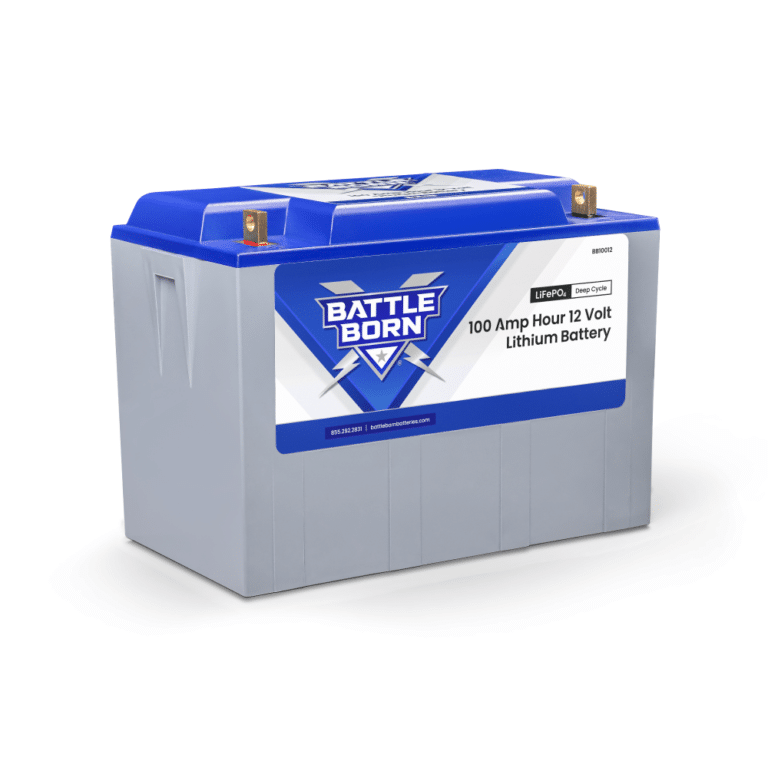
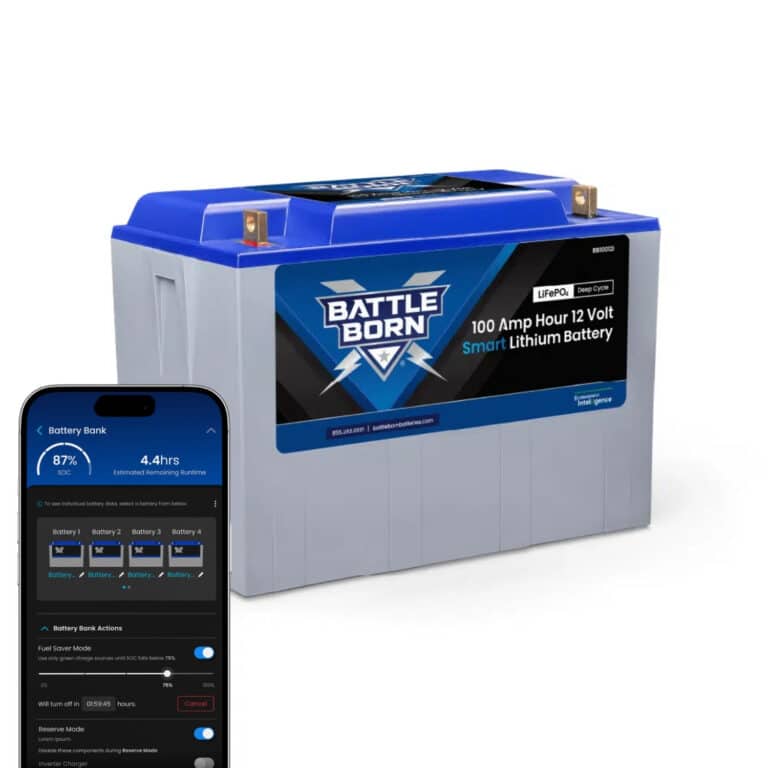
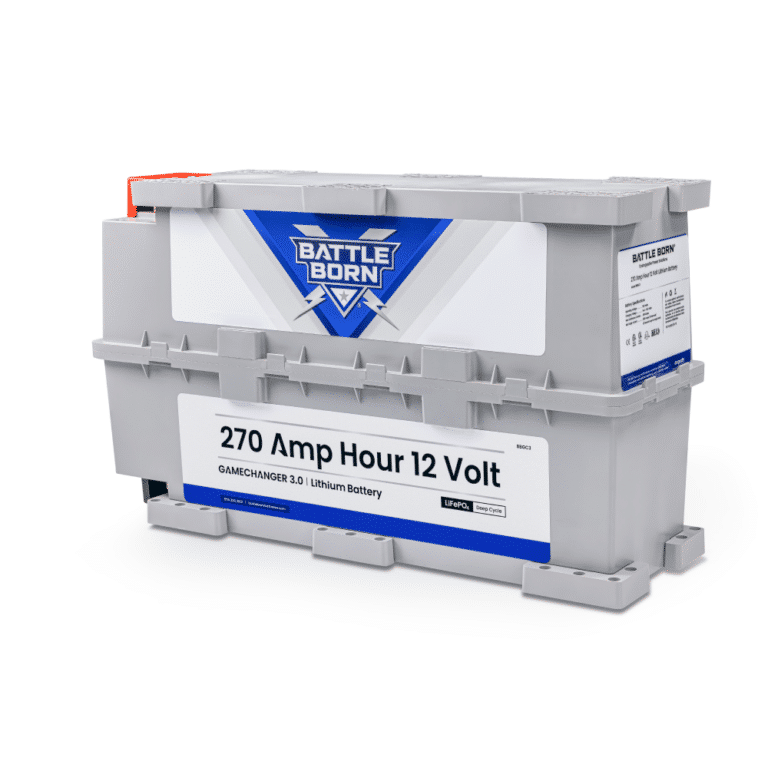
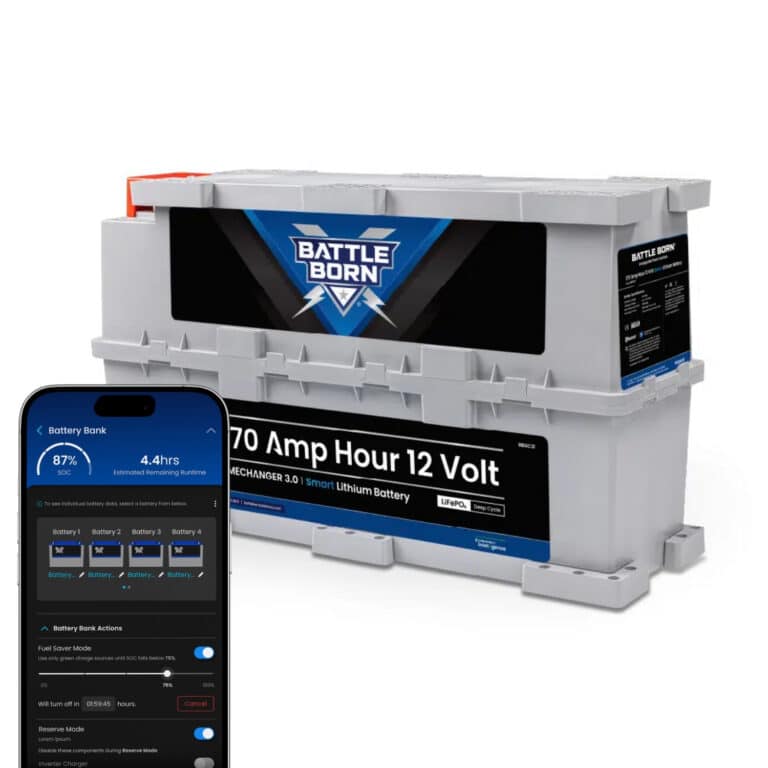
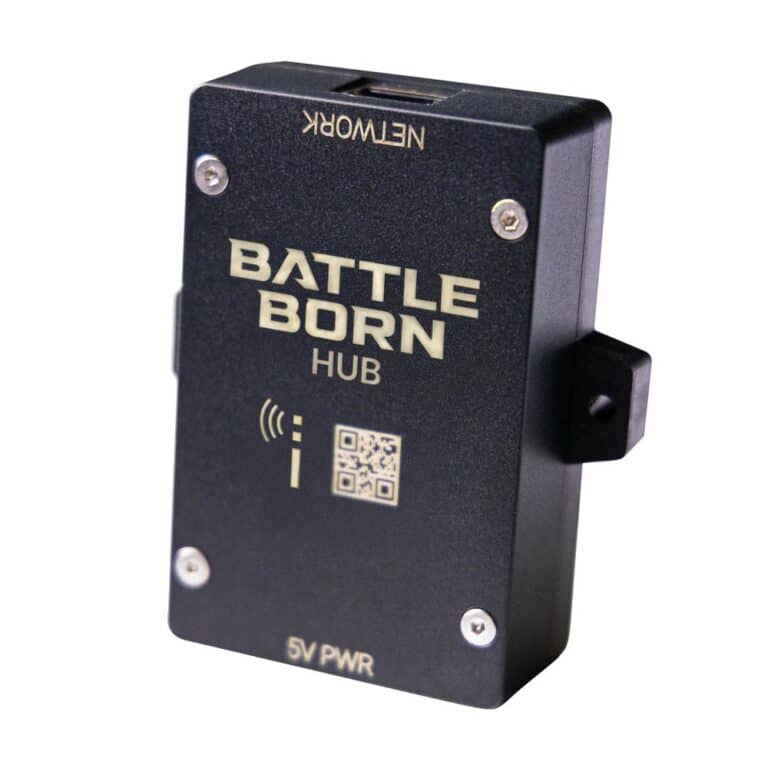
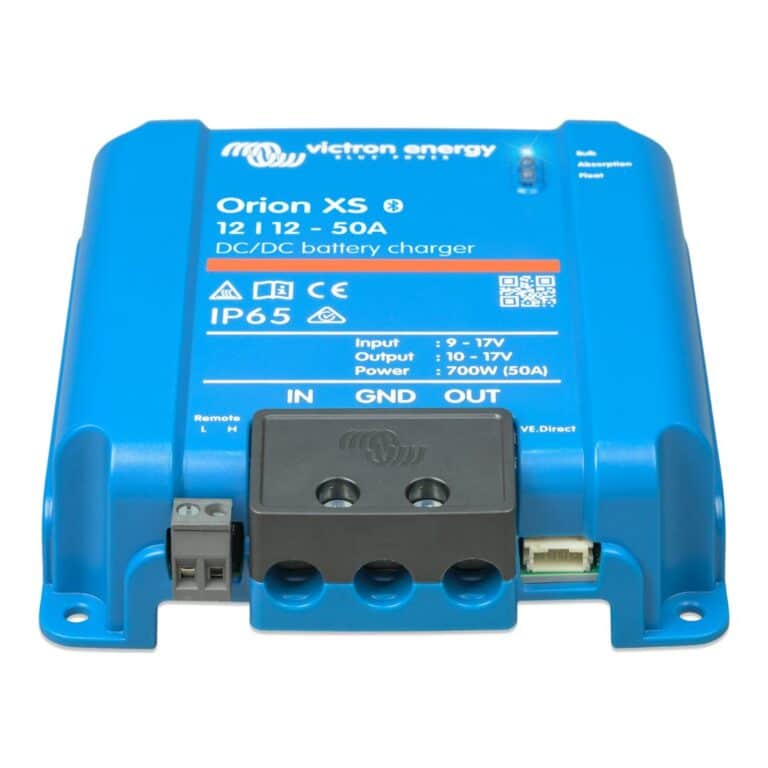
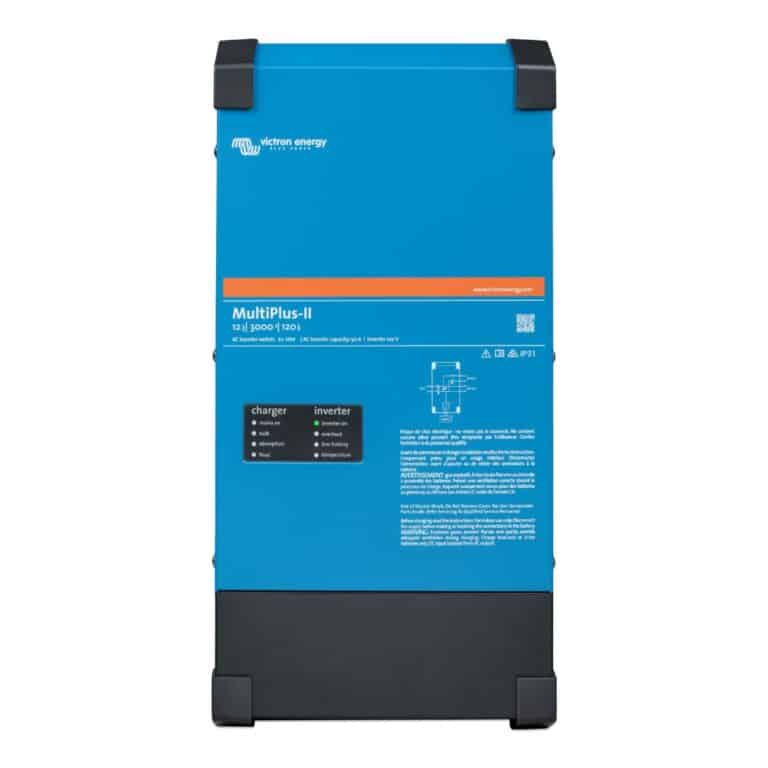

Ask a technical specialist now at 855.292.2831
Stay in the Know
13 thoughts on “The Truth About Lead-Acid Vs. Lithium-Ion Batteries In RVs”
Question: tell me more about charging lithium ion batteries as I live at altitude where the temps get very cold. Thanks.
Hi Bob, thanks for reaching out. At 25° F, a Battle Born battery will no longer accept a charge. This is to preserve the cells in the battery, and the internal BMS will allow a recharge when the temperature is above 32° F. Every single battery that we assemble has an internal BMS. If you’re interested in getting more information, check out our white paper study here. https://battlebornbatteries.com/lead-is-dead-white-paper-study/
Question: regard charging, my original on board single stage converter quit. Replaced with same size multi-stage converter charger, unsure if this would be the correct converter if switching to lithium battery. it appears as our lead acid batteries may have been damaged from the OEM failure to charge.
Are multiple stage converters able to charger lithium without difficulty? This is in a gas class A MH.
Hi Greg, our sales and tech team would be happy to help assess your system if you give us a call at 855-292-2831. Our charger compatibility chart can also assist with any additional questions that you have about charging our batteries without difficulty: https://battlebornbatteries.com/charger-compatibility-table/
May I swap out my standard led acid 12-volt battery on my RV for a lithium battery?
Good morning Philip! Thanks for reaching out. You certainly can swap your standard lead acid batteries for a much more efficient lithium battery. We have several resources for the swap, including our FAQ page: https://battlebornbatteries.com/faq/
Hi, I live in NJ and the winter months can get below freezing for many days. I want lithium batteries for new RV but concerned cold weather will damage them. I plan to use my RV in the winter but not all the time- any suggestions,
Robin
Hi Robin, thanks for reaching out. We have a blog on our website that focuses on the winterization process of our batteries, which you can read about here: https://battlebornbatteries.com/faq-how-to-winterize-your-batteries/
If you have any additional questions please feel free to give our technical sales team a call at 855-292-2831.
If I were to put in two of your batteries in my motorhome the converter would need to be changed to one made for lithium batteries, the BIM would need to be changed to a lithium one, then I set my solar controller to lithium. What will happen to my regular sealed lead acid chassis battery? My solar panel charges the house and chassis batteries all the time there is sun and when on shore power they all charge. How do I fix the charging of the chassis battery
I am trying to decide if I should choose the flooded lead acid vs. the lithium ion battery for my new LSV golf cart. I live in NJ at the shore. I have spoken with two different dealers and each one has a different opinion. One opinion is that the flooded lead acid is a long tested battery and that the lithium ion style hasn’t been around long enough to know of any issues that we might encounter. The second opinion is that is the future. Any advice would be appreciated.
Hi Barbara! Please check out this blog we have posted for more information about golf cart batteries: https://battlebornbatteries.com/golf-cart-batteries/
I’ve been considering upgrading my RV’s battery system and this post was really informative. I’ve always been skeptical of lithium-ion batteries, but it seems like they’re a game-changer. The comparison charts really helped me see the pros and cons of each system more clearly. I’m definitely leaning towards going with lithium-ion now that I’ve read this
Great insights on the pros and cons of lead-acid and lithium-ion batteries! It’s interesting to see how technology is evolving in the RV space. I appreciate the detailed comparison, especially on lifespan and weight. It’s definitely something every RV owner should consider before making a decision. Thanks for putting this together!